Related Research Articles
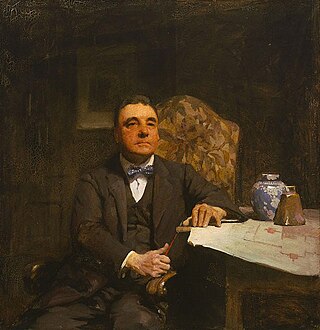
The Archibald Prize is an Australian portraiture art prize for painting, generally seen as the most prestigious portrait prize in Australia. It was first awarded in 1921 after the receipt of a bequest from J. F. Archibald, the editor of The Bulletin who died in 1919. It is administered by the trustees of the Art Gallery of New South Wales and awarded for "the best portrait, preferentially of some man or woman distinguished in Art, Letters, Science or Politics, painted by an artist resident in Australia during the twelve months preceding the date fixed by the trustees for sending in the pictures". The Archibald Prize has been awarded annually since 1921 and since July 2015 the prize has been AU$100,000.

Brett Whiteley AO was an Australian artist. He is represented in the collections of all the large Australian galleries, and was twice winner of the Archibald, Wynne and Sulman prizes. He held many exhibitions, and lived and painted in Australia as well as Italy, England, Fiji and the United States.

Margaret Hannah Olley was an Australian painter. She held over ninety solo exhibitions during her lifetime.
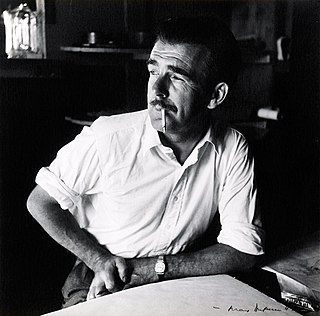
Sir William Dobell was an Australian portrait and landscape artist of the 20th century. Dobell won the Archibald Prize, Australia's premier award for portrait artists on three occasions. The Dobell Prize is named in his honour.

Sir George Russell Drysdale, also known as Tass Drysdale, was an Australian artist. He won the prestigious Wynne Prize for Sofala in 1947, and represented Australia at the Venice Biennale in 1954. He was influenced by abstract and surrealist art, and "created a new vision of the Australian scene as revolutionary and influential as that of Tom Roberts".
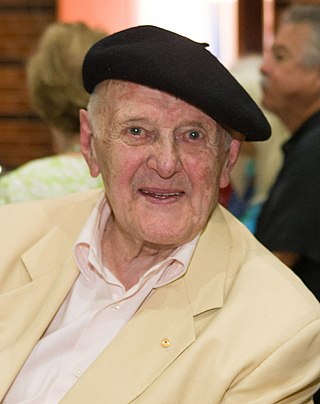
John Henry Olsen AO OBE was an Australian artist and winner of the 2005 Archibald Prize. Olsen's primary subject of work was landscape.
The Wynne Prize is an Australian landscape painting or figure sculpture art prize. As one of Australia's longest-running art prizes, it was established in 1897 from the bequest of Richard Wynne. Now held concurrently with the Sir John Sulman Prize and the Archibald Prize at the Art Gallery of New South Wales in Sydney.
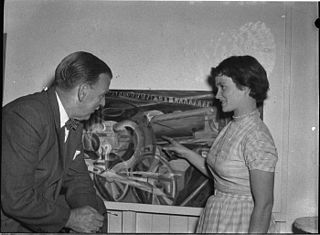
The Dobell Drawing Prize is a biennial drawing prize and exhibition, held by the National Art School in association with the Sir William Dobell Art Foundation.The prize is an open call to all artists and aims to explore the enduring importance of drawing and the breadth and dynamism of contemporary approaches to drawing.
Nicholas Harding was a British-born Australian artist, known for his paintings, in particular portraits.
Euan Macleod is a New Zealand-born artist. Macleod was born in Christchurch, New Zealand and moved to Sydney, Australia in 1981, where he lives and works. He received a Certificate in Graphic Design from Christchurch Technical College in 1975 and a Diploma in Fine Arts (Painting) from the University of Canterbury in 1979. As well as pursuing his art he also teaches painting at the National Art School in Sydney.

Wangi Wangi is a suburb of the City of Lake Macquarie in New South Wales, Australia, which forms a peninsula jutting eastwards into Lake Macquarie. Wangi Wangi is a well known holiday spot, that was frequented in the early days by families from the coalfields. It is known for its views, bush-walking, and fishing spots.
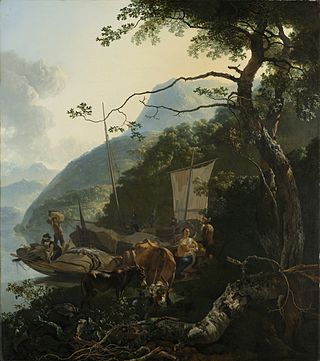
Sam Leach is an Australian contemporary artist. He was born in Adelaide, South Australia. Leach worked for many years in the Australian Tax Office after completion of a degree in Economics. He also completed a Diploma of Art, Bachelor of Fine Art degree and a Master of Fine Art degree at RMIT in Melbourne, Victoria. Leach currently resides in Melbourne. Leach's work has been exhibited in several museum shows including "Optimism" at the Queensland Art Gallery and "Neo Goth" at the University of Queensland Art Museum in 2008, in 2009 "the Shilo Project" at the Ian Potter Museum of Art and "Horror Come Darkness" at the Macquarie University Art Gallery and "Still" at Hawkesbury Regional Gallery in 2010. His work is held in public collections of regional galleries of Geelong, Gold Coast, Coffs Harbour, Newcastle and Gippsland and the collections of La Trobe University and the University of Queensland.

Michael Kmit was a Ukrainian painter who spent twenty-five years in Australia. He is notable for introducing a neo-Byzantine style of painting to Australia, and winning a number of major Australian art prizes including the Blake Prize (1952) and the Sulman Prize. In 1969 the Australian artist and art critic James Gleeson described Kmit as "one of the most sumptuous colourists of our time".
L. Scott Pendlebury or Laurence Scott Pendlebury was an Australian landscape and portrait artist and teacher. He married fellow artist Eleanor Constance "Nornie" Gude in January 1943 and they were the parents of Anne Lorraine Pendlebury, a stage, film and TV actress; and Andrew Scott Pendlebury a guitarist-songwriter. Pendlebury won the Wynne Prize four times for his landscape paintings with The Chicory Kiln, Phillip Island (1956), Constitution Dock, Hobart (1957), Old Farmhouse and Road to Whistlewood (1968). He was a finalist in the Archibald Prize twenty-four times, including Nornie Gude (Artist) (1944) and Anne and Drew Pendlebury (1979). His work was presented in the state galleries of New South Wales, Queensland, South Australia, Tasmania and Victoria. Pendlebury worked at Swinburne Technical College as an instructor from 1946 to 1963 and then as head of the art school until his retirement in 1974. He died in May 1986, aged 72.
The Wedderburn artistic community is an informal group of Australian contemporary artists based around Wedderburn, New South Wales, on Sydney sandstone bushland about 60 kilometres south of Sydney, close to the Georges River. Artists based around Wedderburn include Elisabeth Cummings, Roy Jackson, John Peart, David Hawkes, Suzanne Archer, David Fairbairn, Michael Bright and others. Artists associated with the group have won many major Australian art prizes, including the Wynne Prize, the Sir John Sulman Prize, the Doug Moran National Portrait Prize, the Dobell Prize for Drawing, and the Fleurieu Art Prize.
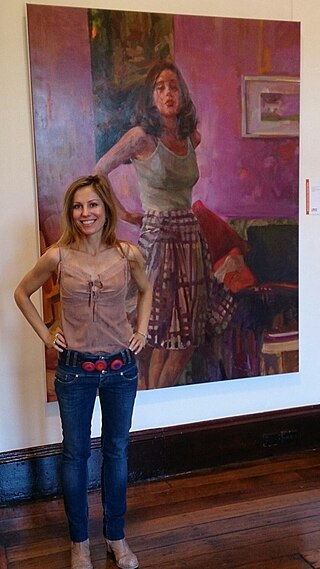
Dagmar Evelyn Cyrulla is an Australian contemporary artist and Archibald finalist. In both 2022 & 2023 she was named one of Australia's 100 hottest collectable artists. Her work is about relationships, especially those from a woman's perspective. In 2017, her painting, 'I Am' was 'Highly Commended' in the Doug Moran portrait prize. In 2017 her work 'The phone call IV' won the Manning regional gallery's "Naked and Nude" art prize.
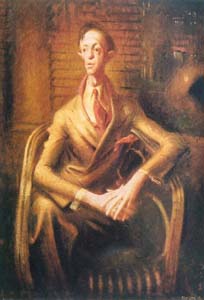
Mr Joshua Smith, also known as Portrait of an Artist (Joshua Smith), is a 1943 painting by Australian artist William Dobell. The painting is a portrait of Joshua Smith, an artist and friend of Dobell. The painting was awarded the Archibald Prize in 1943. The painting took a modernist approach to portraiture; a break with the realism favoured to that date by Archibald Prize entrants.
[I was] trying to create something, instead of copying something. To me, a sincere artist is not one who makes a faithful attempt to put on canvas what is in front of him, but one who tries to create something which is living in itself, regardless of its subject. So long as people expect paintings to be simply coloured photographs they get no individuality and in the case of portraits, no characterisation. The real artist is striving to depict his subject’s character and to stress the caricature, but at least it is art which is alive.

Proposal for landscaped cosmos is a 2010 painting by Australian artist Sam Leach. The work "heavily references" a 1660 painting by Dutch master Adam Pynacker, Boatmen Moored on the Shore of an Italian Lake.
Ann Thomson is an Australian painter and sculptor. She is best known for her large-scale public commissions Ebb Tide (1987) for the Sydney Convention and Exhibition Centre and Australia Felix (1992) for the Seville World Expo. In 1998 she won the [Art Gallery of New South Wales' Wynne Prize. Her work is held in national and international collections, including: the National Gallery of Australia, Canberra; Art Gallery of New South Wales, Sydney, Newcastle Art Gallery, Newcastle, Thyssen-Bornemisza Collection, Madrid and Villa Haiss Museum, Germany.
Dobell House is a heritage-listed former residence and now house museum at 47 Dobell Drive, Wangi Wangi, City of Lake Macquarie, New South Wales, Australia. It was built from 1925 to 1970 by Robert Dobell, the father of noted Australian artist, William Dobell. The house is also known as Allawah and was added to the New South Wales State Heritage Register on 3 February 2017.
References
- 1 2 "Sketch for 'Storm approaching Wangi'". Collection. Art Gallery of New South Wales . Retrieved 21 August 2019.
- 1 2 "Art Prize Pictures". Newcastle Morning Herald & Miners' Advocate . No. 22, 560. New South Wales, Australia. 22 January 1949. p. 1. Retrieved 21 August 2019– via National Library of Australia.
- ↑ "Winner: Wynne Prize 1948". Wynne Prize. Art Gallery of New South Wales. Retrieved 21 August 2019.
- ↑ Kellar, Jim (16 December 2016). "Ah, what price to own a Dobell classic". Newcastle Herald . Retrieved 21 August 2019.
- ↑ "The loss of an important art icon for Newcastle - William Dobell's Storm over Wangi". Cooks Hill Galleries. Retrieved 20 August 2019.
- ↑ "Important Australian Art". Sotheby's Australia. Retrieved 21 August 2019.